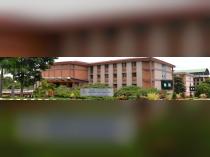What is the syllabus for selection test of M.Sc chemistry at Christ University for 2018?
-
1 Answer
-
The syllabus has following parts:-
Atomic Structure: Bohr's concept. Quantum numbers, Electronic configuration, molecular orbital
theory for homo nuclear molecules, Pauli's exclusion principle. Chemical Bonding: Electrovalency, co-valency, hybridization involving s, p and d orbitals hydrogen bonding. Redox Reactions: Oxidation number, oxidising and reducing agents, balancing of equations. Chemical Equilibrium and Kinetics: Equilibrium constant (for gaseous system only) Le Chaterlier's principle, ionic equilibrium, Ostwald's dilution law, hydrolysis, pH and buffer solution, solubility
product, common-ion effect, rate constant and first ord...more
Similar Questions for you
Christ University Entrance Test is a UG and PG entrance exam which check skills of students in different facets such as English, Reasoning, numerical ability, general knowledge along with programme specific knowledge of students taking the exam.

Christ University Entrance Test CUET has six sections. These sections are English Language, General Knowledge and Current Affairs, Quantitative Aptitude, Numerical Ability and Fundamental Mathematics, Critical, Analytical, Logical Reasoning, Data Analysis and Interpretation and Fundamental Accounting.
Christ University Entrance Test CUET is conducted by Christ University for admission to various UG programmes offered by the University. The students seeking admission to courses such as BBA, BCom, BHM, LLB, BCA, etc. The exam is conducted for admission to the top colleges in the Christ University campuses.
School of Business and Management, Christ University application last date can be checked from the official site. Till then, follow the application procedure that is given below for the application purpose:
1. Reach the School of Business & Management, Christ University official site.
2. Select the School of Business & Management, Christ University course & pay the complete fee for application.
3. Fill all the needed details in the application form.
4. Submit the School of Business & Management, Christ University form.
The mode of School of Business and Management, Christ University course admissions is online. Admission to the available courses is based on merit & entrance test scores. The accepted entrance examination is Christ University Entrance Test CUET. Students who wish to get UG/PG admissions must reach the official site of the School of Business and Management, Christ University. Then, click on the Apply Now tab. Select the needed programme and then pay the complete application fee. Submit the online application form.
Taking an Exam? Selecting a College?
Get authentic answers from experts, students and alumni that you won't find anywhere else
Sign Up on ShikshaOn Shiksha, get access to
- 66k Colleges
- 1.2k Exams
- 680k Reviews
- 1800k Answers


